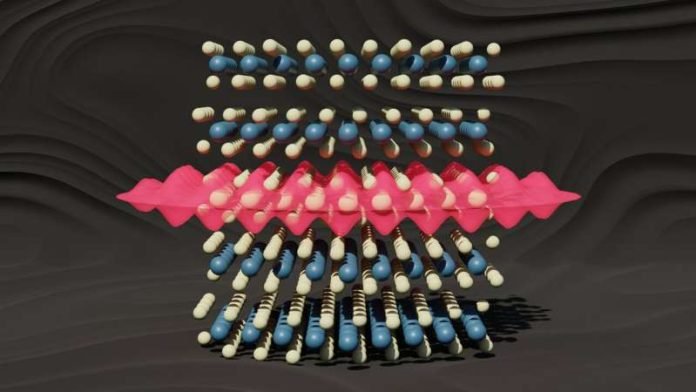
In an exciting leap forward in the world of materials science, researchers from the University of Michigan have made a groundbreaking discovery that could revolutionize computing as we know it.
They’ve managed to stabilize a unique quantum phenomenon, known as a charge density wave, at room temperature in a new class of 2D materials.
This discovery, detailed in Nature Communications, marks a significant milestone in the quest to develop quantum materials suitable for everyday computing applications.
Quantum materials, substances that exhibit unusual quantum properties like superconductivity or specific magnetic behaviors, have long fascinated scientists.
These properties, however, are notoriously delicate, often only emerging at incredibly low temperatures or under other specific conditions that are difficult to maintain.
For instance, quantum computers, which could potentially perform calculations far more complex than any current technology, currently operate in baths of liquid helium at temperatures nearing absolute zero to preserve their quantum states.
The team’s approach to this challenge was innovative. Instead of trying to maintain these delicate quantum states through external means, they developed a way to grow a 2D material within another material, a process they’ve termed “endotaxial” synthesis.
This technique allowed them to create a stable charge density wave within layers of tantalum disulfide (TaS2), a metallic crystal.
In essence, the electrons within these layers spontaneously organize into a crystal-like pattern, transforming the material from a conductor to an insulator without altering its chemical composition.
This is the first time such a phenomenon has been observed in a 2D material, and the implications are staggering.
Not only does the charge density wave exist at room temperature, but it also remains stable even when heated beyond the boiling point of water.
This durability suggests that materials like these could form the basis of new types of transistors for both classical and quantum computing, acting as switches to control the flow of voltage.
The discovery is a crucial step towards making quantum materials viable for everyday technology.
Quantum computing, in particular, has been limited by the need for ultra-cold temperatures, but this research shows a path forward where quantum phenomena can exist in conditions much closer to those of the everyday environment.
This not only broadens the potential applications of quantum materials but also opens up new avenues for research into how these exotic states can be harnessed for practical use.
The significance of this work cannot be overstated. As Robert Hovden, an associate professor involved in the research, puts it, both classical and quantum computing are at a crossroads, searching for new materials to break through current limitations.
This discovery not only advances our understanding of quantum materials but also offers a promising new strategy for stabilizing their unique properties at more practical temperatures, paving the way for the next generation of computing technology.
The research findings can be found in Nature Communications.
Copyright © 2024 Knowridge Science Report. All rights reserved.



